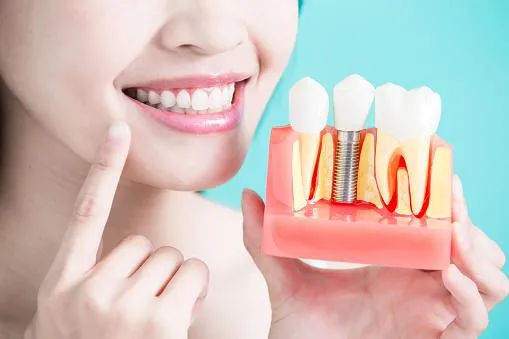Dental Implants
Once considered an elective for the privileged few,
dental implants are now provided as a routine dental service. Long-term success for these patients is dependent on a collaborative effort with the dentist and dental hygienist, however, there is limited formal education about dental implant maintenance in the current United States dental hygiene curriculum.
PARTS, PIECES, CHEMISTRY & COMPATIBILITY - DENTAL HYGIENE CONSIDERATIONS FOR IMPLANT MAINTENANCE
We are now 40 years since professor Brånemark introduced his research on osseointegration to the dental community.
Dental Implants provide our patients with successful long-term restorative solutions for function, comfort, and aesthetics. Today, Dental Hygienists are seeing more patients with dental implants.
Implant manufacturers have introduced new implant designs, implant surfaces, and surface chemistry that affect biocompatibility and maintenance protocols.
Therefore, there is a concern if what we are using to reduce the peri-implant inflammation may negatively affect the biocompatibility of the implant surface and the implant’s long-term success.
This class will review dental implant component materials and design and the biological compatibility of commonly used instruments, technology, and therapeutic materials.

Course Objectives:
Review Dental Implant Restorative History leading up to full arch restorative cases
Identify patient needs for complex implant restorations to ensure the long-term success of these cases
Discuss the AAP Full Arch Dental Implant Restorative Maintenance Protocols
Review protocol for removal of screw-retained fixed prosthetics
Review home care products and techniques for patients with fixed prosthetics
DENTAL HYGIENE CONSIDERATIONS FOR FULL ARCH IMPLANT SUPPORTED PROSTHETICS
Dental Implant supported fixed restorative concepts are commonly sought after by patients with terminal dentitions. These restorative solutions have demonstrated long-term success in providing function, comfort, and aesthetics.
Implant Supported Full Arch Solutions can vary in the number of implants and restorative design. Prosthetics can be removable or fixed by screw retention or cementation.
With proper restorative design and the patients' commitment to homecare and professional recall maintenance, successful long-term rehabilitation can be achieved.
The Dental Hygienist needs to be comfortable with maintenance protocol for patients with complex implant restorations to ensure the long-term success of these cases. Proper oral hygiene is necessary for the reduction of etiology contributing to inflammation and peri-implantitis.
Screw-retained restorations are desirable to maintain mechanical function and biological complications after delivery and during the maintenance phase. A review of the
American College of Prosthodontists'
recommendations for when to remove fixed prosthetics for maintenance will be highlighted. Along with postsurgical aftercare for immediate provisional prosthetics and considerations for homecare tools and techniques.
A hands-on component of removal of the screw-retained prosthetic may be available.
Review Dental Implant Restorative History leading up to full arch restorative cases
Identify patient needs for complex implant restorations to ensure the long-term success of these cases
Discuss the AAP Full Arch Dental Implant Restorative Maintenance Protocols
Review protocol for removal of screw-retained fixed prosthetics
Review home care products and techniques for patients with fixed prosthetics
Dental Implants
Parts, Pieces, Chemistry & Compatibility
Dental Hygiene Considerations
Vision And Ergonomics
Vision Magnification & Patient Care
Loupes Lights & Leaning Curves
Career Advancements
I Did not Know a Hygienist Could Walk On The Moon
Career Options
Have Additional Questions?
Reach out to us anytime and we will be happy to answer any questions or concerns that you have!
FAQS
What makes Lynn Pencek different?
Lynn is a clinician with industry experience and an education degree
What if I’ve never hosted a study group before?
Lynn has experience of working as an implant rep and meeting planner. She can help guide your organization through all steps of arranging your event.

